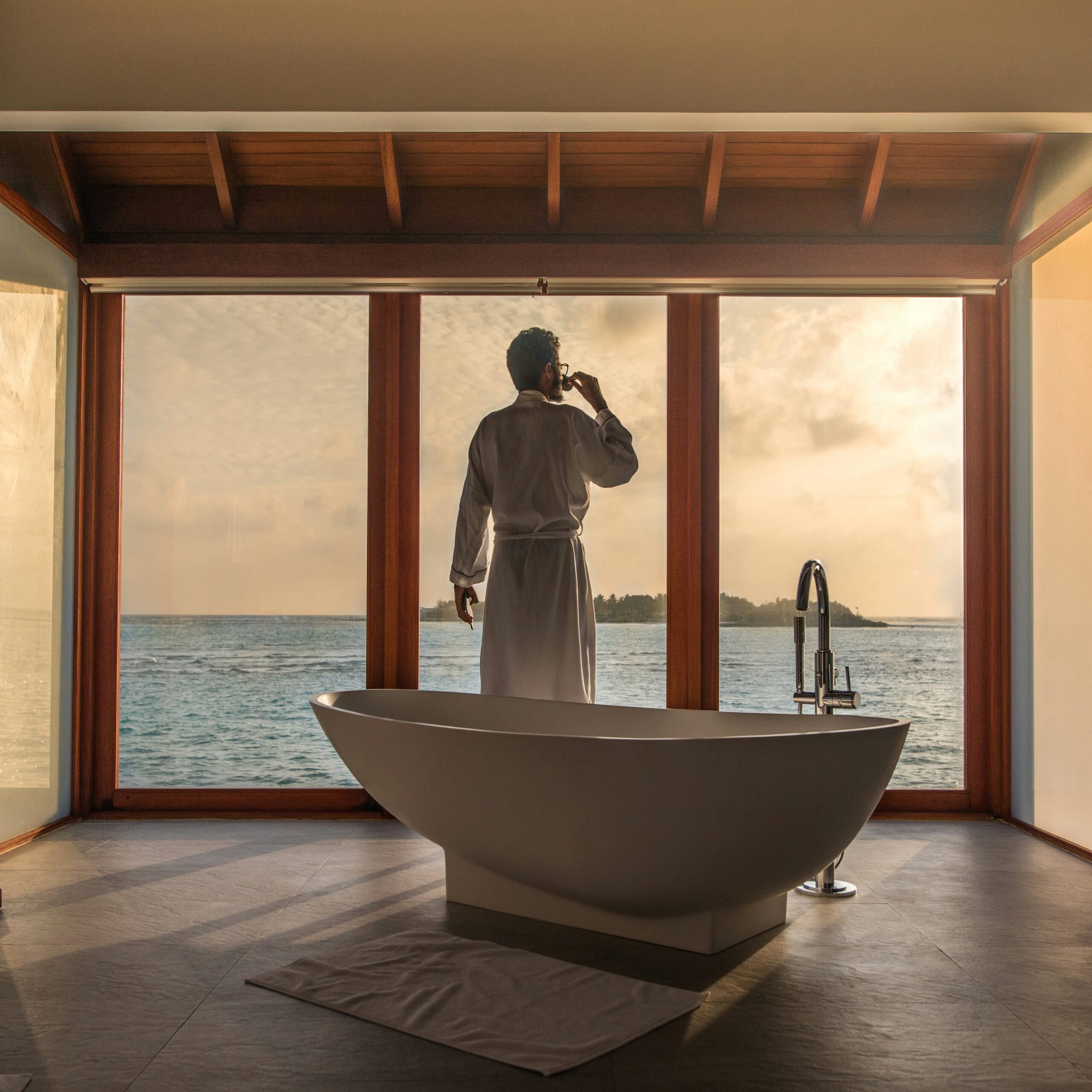Why Discretion, Quality, and Craftsmanship Are the New Status Symbols
5 min read
June 16, 2025

For decades, the luxury market was often equated to a symphony of status symbols, where brand logos shouted from billboards and bags, proclaiming wealth in no uncertain terms. Yet, a profound shift is underway. A subtle, yet powerful, revolution is sweeping through the world of high-end consumption, giving rise to ‘quiet luxury’ and ‘understated affluence.’ This isn’t just a fleeting trend; it’s a recalibration of values, a nuanced redefinition of what accurate luxury means in the modern age.
This isn’t about shunning wealth; it’s about discerning its expression. The new status symbol isn’t a flashy monogram, but an unidentifiable cashmere coat, a perfectly tailored suit, or a timeless leather bag whose quality whispers its provenance only to those ‘in the know.’
From Ostentation to Intention: A Historical Echo
While the term ‘quiet luxury’ might feel fresh, the concept itself has deep historical roots. In the late 18th and early 19th centuries, as power shifted from the flamboyant aristocracy to a rising capitalist class, wealthy elites deliberately adopted more understated clothing and interiors. This was a way to differentiate themselves from the excessive, often gaudy, styles of the old court. Think of the ‘Great Male Renunciation’ where men’s fashion pivoted from lace and powdered wigs to sombre, tailored suits — a move away from overt displays of inherited privilege towards a more subtle, yet powerful, signal of refined taste.
Similarly, designers like Donna Karan and Miuccia Prada popularised streamlined, practical clothing in the 1990s. This mirrored a broader cultural shift towards a more casual, yet status-conscious uniform among affluent professionals. In essence, while the name is new, the principle of discreet display of wealth, recognisable only to an exclusive group, is a recurring theme in the annals of luxury.
The Forces Behind the Whisper and Why Now?
Several contemporary factors are converging to propel quiet luxury into the mainstream:
- Economic Uncertainty: In times of recession or slowing growth, ostentatious displays of wealth can be perceived as insensitive or even gauche. Consumers, even the affluent, become more mindful of their purchases, prioritising long-term value, durability, and timelessness over fleeting trends. Investing in high-quality, discrete goods becomes a more sophisticated marker of status.
- Social Media Fatigue: The relentless pursuit of ‘Instagrammable’ moments and the oversaturation of highly branded luxury on social platforms have led to a desire for authenticity and less performative consumption. There is an emerging weariness with superficiality, prompting discerning individuals to seek purchases that offer genuine, intrinsic value rather than just external validation.
- The ‘Succession’ Effect: Pop culture has also played an undeniable role. Shows like HBO’s ‘Succession’ vividly showcased the subdued yet unmistakably luxurious fashion choices of the ultra-wealthy Roy family. A simple cashmere hat or an impeccably tailored suit from brands like Loro Piana or Brunello Cucinelli became iconic symbols of this stealth wealth, influencing mainstream perceptions of aspirational style.
- A Maturing Luxury Market: Especially in regions like China, where the luxury market has rapidly expanded and matured, consumers are moving beyond initial novelty. Status is no longer achieved by simply owning luxury, but by owning a special kind of luxury — one that communicates connoisseurship and a deeper understanding of quality.
The Anatomy of Understated Affluence: What Does It Look Like?
Quiet luxury isn’t about being cheap; it’s often more expensive due to its emphasis on:
- Premium Fabrics & Materials: Think sumptuous cashmere, luxurious silks, fine wools, and buttery soft leathers. The material speaks for itself, offering unparalleled comfort and longevity.
- Impeccable Craftsmanship & Tailoring: Clothes are perfectly cut, drapes flawlessly, and often custom-made or from brands renowned for their sartorial precision (e.g., The Row, Max Mara, Jil Sander). Details like stitching, lining, and hardware are meticulously executed.
- Timeless Silhouettes & Neutral Palettes: Designs are classic, minimalist, and defy seasonal trends. The colour palette typically consists of muted tones, such as beige, cream, taupe, navy, and charcoal, exuding effortless sophistication.
- Discreet (or Absent) Branding: Logos are either non-existent or subtly integrated. The product’s quality, feel, and cut are the valid identifiers of its luxury status. It’s about ‘if you know, you know’ rather than shouting to the masses.
- Longevity & Durability: These are investment pieces designed to last for years, often decades. This aligns with a more mindful consumption approach and a rejection of fast fashion.
Beyond Fashion: Quiet Luxury in Every Aspect of Life
The influence of understated affluence extends far beyond the wardrobe, permeating interiors, travel, and even personal wellness:
- Interiors: Homes embracing quiet luxury feature soothing, neutral palettes, natural textures (such as wood, stone, and linen), and a focus on fewer, high-impact, bespoke pieces. It prioritises comfort, serenity, and functional design, creating an environment that feels curated and intimate rather than flashy.
- Travel: Discerning travellers are seeking ‘experiential luxury’— personalised, transformative journeys over opulent, generic resorts. This involves unique cultural immersions, private access to historical sites, or exclusive encounters, where the true luxury is the depth of the experience, not just the thread count of the sheets.
- Personal Wellness: Investment in bespoke health, longevity, and mental well-being programmes (e.g., exclusive diagnostic clinics, personalised nutrition, biohacking retreats) is becoming the ultimate luxury. It’s about optimising human potential, a private pursuit of peak health.
The New Aspiration: Connoisseurship Over Consumption
The rise of quiet luxury reflects a maturing consumer. It’s a testament to the idea that actual value lies not in visible display, but in intrinsic quality, authentic craftsmanship, and the profound personal satisfaction derived from owning something truly exceptional. It’s about brand authenticity and a deeper connection to the product’s story and creation.
This trend encourages consumers to become more discerning, shifting from a desire for conspicuous consumption to a pursuit of mindful consumption and genuine connoisseurship. It’s a refreshing change for those who appreciate a refined aesthetic and prefer to whisper their affluence rather than shout it. In a world saturated with noise, the quiet confidence of true quality has become the loudest statement of all.



